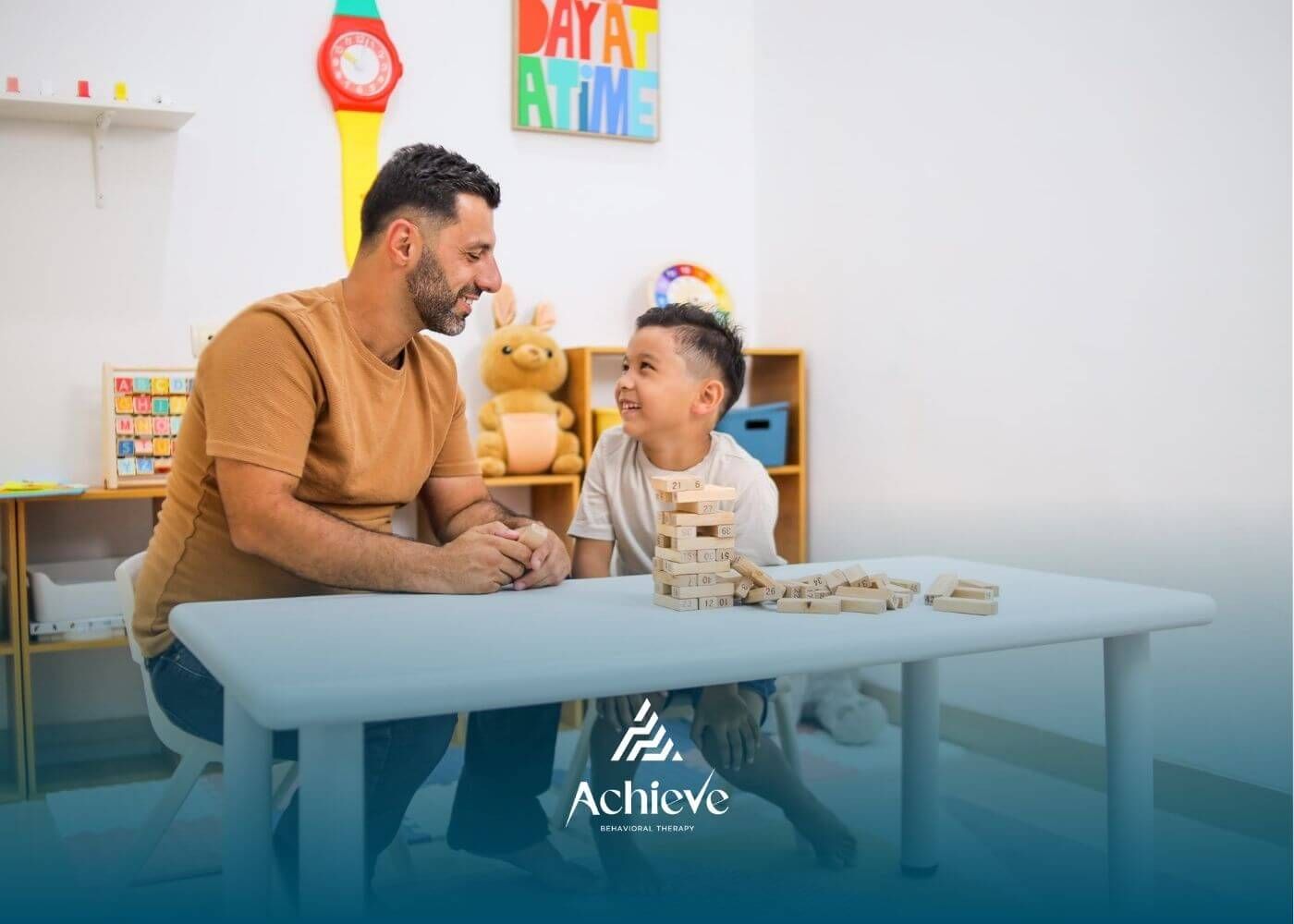Exploring Various Types of Autism

This is a subtitle for your new post
Autism Spectrum Disorder (ASD) is a neurodevelopmental disorder that often appears in early childhood. It affects how people communicate, behave, and interact with others. This developmental disorder presents various challenges and unique experiences for each individual. Autism is known as a spectrum disorder because it shows up in many ways, with different symptoms and how serious they are.
Individuals with this disorder may exhibit repetitive behaviors. They might also find it hard to understand social cues. There is a large range of traits in the autism spectrum, and everyone is different. This blog will cover the main types of autism spectrum disorder. It will also look at how learning about them can help with better support and care.
Understanding Autism Spectrum Disorder (ASD)
A spectrum disorder includes many different types of autism. All of these types are called autism spectrum disorder (ASD). People with autism spectrum can have a wide range of symptoms, including anxiety disorders. They may have trouble with social interaction. Some may also have communication difficulties or show repetitive patterns of behavior.
Diagnostic criteria help to find out if someone has ASD. Knowing this is important because it leads to the right help for each person. Support can include things like speech therapy or ABA therapy.
Early intervention is very helpful. Getting support early can help improve quality of life. It can make social skills better and help overall development, too.
The Spectrum Nature of Autism
Autism is not the same for everyone. It covers a wide range of symptoms and behaviors, and autistic people are different from each other. Some might be very good in things like memory or strong interests, even displaying an intense interest in specific subjects, but have trouble with other things. Because there is such a range of symptoms, the idea of a spectrum helps people see what autism is.
Repetitive behaviors, such as hand-flapping or other movements, are common in autistic people with autism. Some find comfort in these actions, but for others, it can cause sensory overload from sensory input. Social interaction can also be hard, and this can go from trouble talking to not picking up social cues.
Understanding the spectrum shows why two autistic people can act very differently. One person with autism might have motor skill trouble and intellectual disabilities. Another might do well in school but have trouble in social life. Knowing that each person is different helps us make plans that fit their needs and help them with their daily life and being more independent.
Common Signs and Symptoms Across Types
Autism, no matter what type it is, has a few main traits that help people understand the condition. The biggest signs can be seen in social skills, how someone talks and listens, and certain ways a person acts.
- Some people find it hard to figure out social cues. For example, they may not know what a facial expression means or may find it tough to keep up a back-and-forth talk.
- They may make limited or unusual eye contact. This might look like they do not want to engage with others.
- There can be communication difficulties. Someone might not talk much about what they think, or they could use the same phrases again and again.
- Repetitive movements, like rocking or spinning, are common. These can help calm the person.
Many of these things show up when a child is young. They can change how someone relates to others and how they get through each day. Some people may also feel overwhelmed by noisy rooms or bright lights, showing they have sensory sensitivities. All these common things help people notice and understand autism. Still, each person's way of dealing with autism is different because everyone brings their own mix of strengths and struggles.
Diagnostic Classifications of Autism in the United States
In the United States, autism spectrum disorder is identified by clear sets of rules, mainly the DSM-5 and ICD-10. These tell doctors and others working with people how to look for autism symptoms, including utilizing assessments such as the autism diagnostic observation schedule. The diagnostic criteria list out what to look for, so people can understand the different sides of the autism spectrum.
Earlier, DSM-4 used to have different names like Asperger’s syndrome. But with DSM-5, they are now all called Autism Spectrum Disorder (ASD). This updated spectrum disorder name fully describes how the autism spectrum works. It helps everyone use the same words and steps when talking about or checking for mental disorders. It also helps decide how people in the United States get care, treatment, or other support for ASD.
DSM-5 Criteria and Levels of Severity
The DSM-5, or the Diagnostic and Statistical Manual of Mental Disorders, uses one main name, autism spectrum disorder, for all cases of autism. It sets out three levels of spectrum disorder depending on how strong the symptoms are. The checklist looks at two main areas. It checks social communication and also looks at repetitive patterns of behavior.
ICD-10 and Other Diagnostic Systems
The ICD-10 is managed by the World Health Organization. It puts autism under "Pervasive Developmental Disorders." This system looks at mental health and how people grow and change as they get older.
The ICD-10 is different from the DSM-5. It keeps using certain words like Asperger’s syndrome and childhood autism. This means, in some places around the world, people might not say the same things about symptoms. Still, both systems try to spot things like trouble with talking or with social interaction.
Diagnostic frameworks are more than just classification. They help people know if they can get treatment, shape the way research is done, and help push for change for those who need it. These guides ensure that people with autism get care and that their mental health or other needs are considered, too.
Types of Autism Formerly Recognized as Separate Diagnoses
Earlier, the diagnostic systems saw autism as a set of types. These included pervasive developmental disorder, infantile autism, and Asperger’s syndrome. At that time, each type had its challenges and different traits.
After some time, the DSM-5 brought changes. It grouped all these under one name, called Autism Spectrum Disorder. This made it clear that people can have many different signs and levels of support in the autism spectrum.
Older terms, like pervasive developmental disorder-not otherwise specified (PDD-NOS), were used to talk about lots of different signs and ways people showed this developmental disorder. Still, having one big term now helps us talk about how people with autism spectrum disorder can each be different but can also share certain things with others on the spectrum.
1. Classic Autism (Autistic Disorder)
Classic autism, also called autistic disorder, is a severe form of autism. People with this tend to have big challenges in social interaction and nonverbal communication. This means they may not make eye contact or may not use body language in the way other people do. They might also show repetitive patterns of behavior. Many find it hard to connect with others.
Early diagnosis is very important. When you find out early, treatment options such as behavior analysis, ABA therapy or speech therapy can help a lot. These steps may make a big difference in the way a person learns and develops. It can also help them do better in daily life.
Supporting people with autistic disorder often takes a lot, but this help makes a significant improvement and difference. It lets them be more a part of everyday social interaction, which could also improve the overall quality of life for them.
2. Asperger’s Syndrome
Asperger’s syndrome, also referred to as Asperger's Syndrome, is a type of autism. People who have it often find social communication and social interaction hard. But they may have average or even above-average intelligence. They sometimes have a deep focus on specific topics. Picking up social cues can be hard for them, and this can make daily life and relationships tough. Some people show repetitive behaviors and face communication difficulties, too.
Early intervention can help a lot. Things like occupational therapy, sensory integration therapy, and social skills training may improve social skills and boost quality of life. This gives people better ways to handle daily life and challenges.
3. Pervasive Developmental Disorder–Not Otherwise Specified (PDD-NOS)
Pervasive Developmental Disorder–Not Otherwise Specified (PDD-NOS) is a type of autism spectrum condition. It often shows up as a mix of symptoms. People with this developmental disorder may have a hard time with social communication and finding it tough to connect with others. They may also show some repetitive behaviors. But, they do not always meet the usual diagnostic criteria for other types of autism.
Because of this, the way you help people with PDD-NOS may be a bit different. They might need things like occupational therapy or speech therapy. These therapies help to build their social skills and to help with how they talk to others. Using these supports can make a big change in their quality of life. These steps are all part of working with a neurodevelopmental disorder like this one.
4. Rare and Complex Types of Autism
A closer look at rare and complex types of autism shows there are special challenges and traits you may see. For example, childhood disintegrative disorder is a condition where children lose key skills they once had. This loss often leads to big communication difficulties. It also affects a child's development and can make it hard for them to reach certain milestones, including those associated with conditions like attention-deficit/hyperactivity disorder.
Rett syndrome is different but also very serious. It often shows up as repetitive movements and a loss of useful hand skills. People with Rett syndrome usually need substantial support all throughout their lives.
Knowing more about these complex disorders can help give people better treatment options. Care that includes occupational therapy and speech therapy can help boost the quality of life for those with childhood disintegrative disorder or Rett syndrome. These therapies help the person deal with communication difficulties and daily challenges.
5. Childhood Disintegrative Disorder (CDD)
Childhood disintegrative disorder is a severe form of autism that usually shows up after a child has had about two years of normal growth. In this condition, a child can lose skills they used to have. The loss can be in language, motor skills, or social interaction. This makes it hard for them to talk and get along with other people. Repetitive behaviors can be very clear and can get in the way of daily life.
Early diagnosis is very important. It helps to start speech therapy or look at their behavior as soon as possible. Early steps like these can manage the symptoms and make the quality of life better for children with childhood disintegrative disorder.
6. Rett Syndrome
Rett syndrome is a rare genetic disorder that mostly affects girls. It has a big effect on motor skills and makes it hard for people to talk or use their hands on purpose. In the first few months, kids often develop as expected. But from about six months to two years, they may show signs that can include symptoms of Rett syndrome, losing the use of their hands for normal things, pulling back from people, and trouble speaking.
Repetitive behaviors and trouble with social interaction are also common. If there is an early diagnosis, it can help a lot. Getting therapies like occupational therapy or speech therapy early may help the child do better, improve their social interaction, and boost their quality of life.
Conclusion
Understanding the spectrum of autism helps people be more supportive and welcoming. Every person with autism has their mix of traits. Some may have trouble with communication, while others show different levels of social skills. Knowing about the different types of autism, including those needing significant support, is important.
It helps with early diagnosis and shows why treatment options need to fit each person. When we focus on awareness, people can get support like occupational therapy and speech therapy. This can help to improve their quality of life and support better social skills and interactions.
Understanding the unique ways autism presents itself is crucial, and at Achieve Behavioral Therapy, we embrace the rich diversity of the autism spectrum. We don't believe in a one-size-fits-all approach; instead, our expert team conducts comprehensive assessments to craft highly personalized ABA therapy programs.
We empower children and teenagers to achieve their full potential, recognizing and celebrating the individuality that makes them unique. Choose Achieve Behavioral Therapy for compassionate, evidence-based care tailored to your child's specific needs, helping them thrive within their unique journey.
Frequently Asked Questions
What are the main types of autism currently recognized?
The main types of autism that people talk about are classic autism, Asperger’s syndrome, pervasive developmental disorder-not otherwise specified (PDD-NOS), childhood disintegrative disorder (CDD), and Rett syndrome. Each type is a developmental disorder. These types have their own signs and ways they show up in people. Not everyone will have the same symptoms. It is important to know about these different kinds. This helps people get the right support and care.
What is the mildest form of autism?
The mildest kind of autism is usually called Asperger's syndrome. People who have this condition often have average intelligence or even above average. They might find it hard to talk with other people, but they can be very good at some things that interest them a lot.
How do autism levels (1, 2, 3) differ?
Autism levels show how much help a person may need in daily life. People at Level 1 need only a small amount of support. Those at Level 2 need quite a bit of help, especially when it comes to social skills and the level of support required. Level 3 means a person has big challenges and will need very strong support every day. Knowing these levels can help us give the right kind of help to each person.
Can someone have traits from more than one autism type?
Yes, people can show signs from more than one type that is found in the autism spectrum. This is something you will see often because the autism spectrum is made up of many kinds, and the traits in it may cross over with each other. Each person with autism will have the one-of-a-kind way they act or feel, and they may have a mix of different traits and actions.
Is Asperger’s still diagnosed today?
Asperger's syndrome is not used as a separate diagnosis now. The DSM-5 put it under autism spectrum disorder, or ASD. Still, many people like to use the word Asperger's because of its history. Some people feel that it helps show the special traits found in the syndrome. Many know it as a type of autism spectrum disorder, or part of the autism spectrum.
Need Support?
We're Here to Help!
Our experienced team is ready to assist you. Reach out today to discuss how we can support your child's development and well-being.
Get started with expert ABA therapy today.














